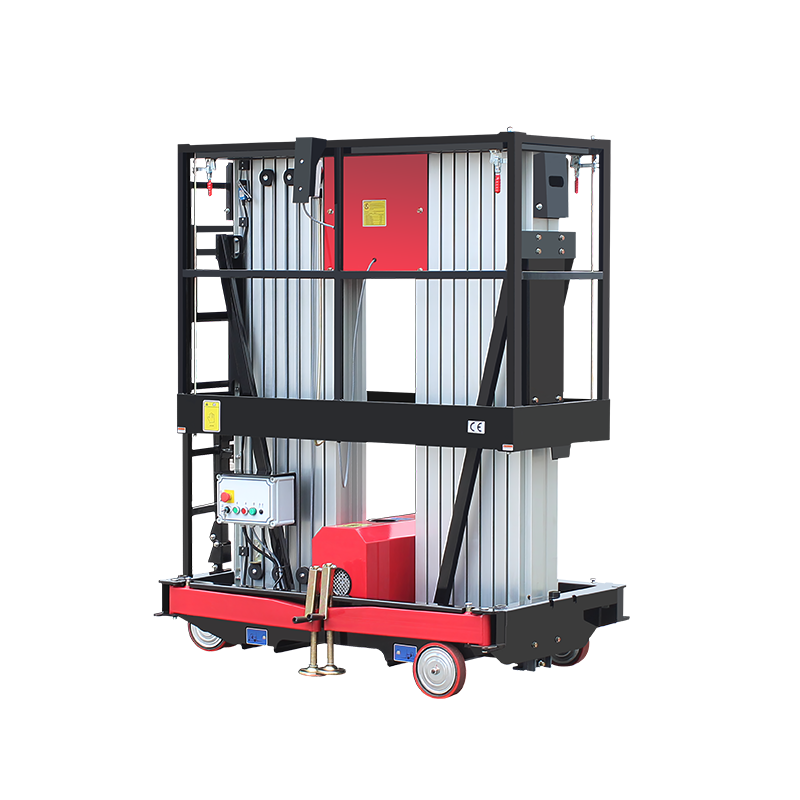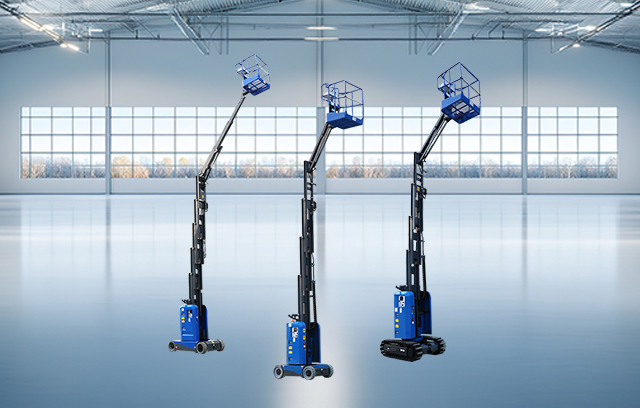Push Around Vertical Lifts are compact aerial work platforms designed for vertical access and mobility in relatively small and indoor spaces. These lifts are typically used for tasks like maintenance, repair work, and construction in areas where traditional scissor lifts or boom lifts may not fit or may be overkill. The vertical lifting capability of Push Around Vertical Lifts is achieved through a combination of mechanical components and hydraulic systems:
Scissor Mechanism: The core of the lifting mechanism in a Push Around Vertical Lift is a scissor-like structure that extends and retracts vertically. When the lift is in operation, the scissor arms extend, pushing the platform upwards. When the desired height is reached, the scissor arms retract, lowering the platform. The scissor mechanism is operated by a hydraulic system.
Hydraulic System: Push Around Vertical Lifts utilize a hydraulic system to control the extension and retraction of the scissor mechanism. A hydraulic pump, typically powered by an electric motor or a manual pump, pressurizes hydraulic fluid, which is then used to extend and retract the scissor arms. The hydraulic system provides the force necessary for vertical movement.
Control Panel: Operators control the lift using a control panel on the platform. The control panel allows them to raise and lower the platform to the desired height. Some models also include safety features such as emergency stop buttons, tilt sensors, and leveling indicators.
Stabilizers: To ensure stability while working at height, Push Around Vertical Lifts often have stabilizers or outriggers that can be deployed to provide a wider base and prevent tipping. These stabilizers are adjustable to accommodate uneven ground.
Mobility: Push Around Vertical Lifts are designed to be manually pushed or towed into position, making them relatively easy to move around in tight spaces. They are compact and lightweight, which makes them suitable for indoor and narrow spaces.
Power Source: Push Around Vertical Lifts are typically electric, and they can be plugged into standard power outlets. Some models may also feature onboard batteries for remote or outdoor use.

AWP2 Double Masts Push Around Vertical Lifts

AWP2 Double Masts Push Around Vertical Lifts
1.Deadman switch
2.AC power on platform
3.Self-lock gate on platform
4.Leveling bubble
5.Emergency Lowering system
6.Emergency Stop Button
7.Forklift pocket
8.Cylinder holding valve










 Español
Español















